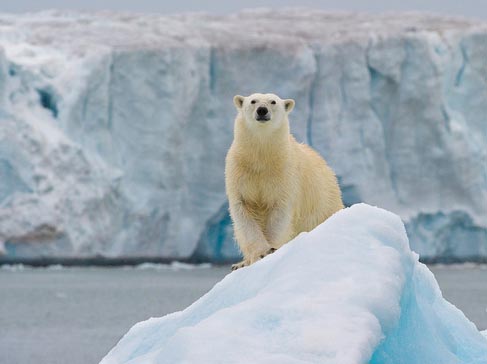Global warming putting Arctic wildlife and landscapes at risk
 Washington, Feb 15 : A new report suggests that the unique and irreplaceable Arctic wildlife and landscapes are crucially at risk due to global warming caused by human activities.
Washington, Feb 15 : A new report suggests that the unique and irreplaceable Arctic wildlife and landscapes are crucially at risk due to global warming caused by human activities.
The Arctic Biodiversity Assessment (ABA) is a report prepared by 253 scientists from 15 countries under the auspices of the Conservation of Arctic Flora and Fauna (CAFF), the biodiversity working group of the Arctic Council.
"An entire bio-climatic zone, the high Arctic, may disappear. Polar bears and the other highly adapted organisms cannot move further north, so they may go extinct. We risk losing several species forever," Hans Meltofte of Aarhus University, chief scientist of the report, said.
From the iconic polar bear and elusive narwhal to the tiny Arctic flowers and lichens that paint the tundra in the summer months, the Arctic is home to a diversity of highly adapted animal, plant, fungal and microbial species. All told, there are more than 21,000 species.
Millions of Arctic birds and mammals that migrate and connect the Arctic to virtually all parts of the globe are also at risk from climate change in the Arctic as well as from development and hunting in temperate and tropical areas.
Marine and terrestrial ecosystems such as vast areas of lowland tundra, wetlands, mountains, extensive shallow ocean shelves, millennia-old ice shelves and huge seabird cliffs that are characteristic to the Arctic, are also at stake, according to the report.
"Climate change is by far the worst threat to Arctic biodiversity. Temperatures are expected to increase more in the Arctic compared to the global average, resulting in severe disruptions to Arctic biodiversity some of which are already visible," Meltofte said. (ANI)